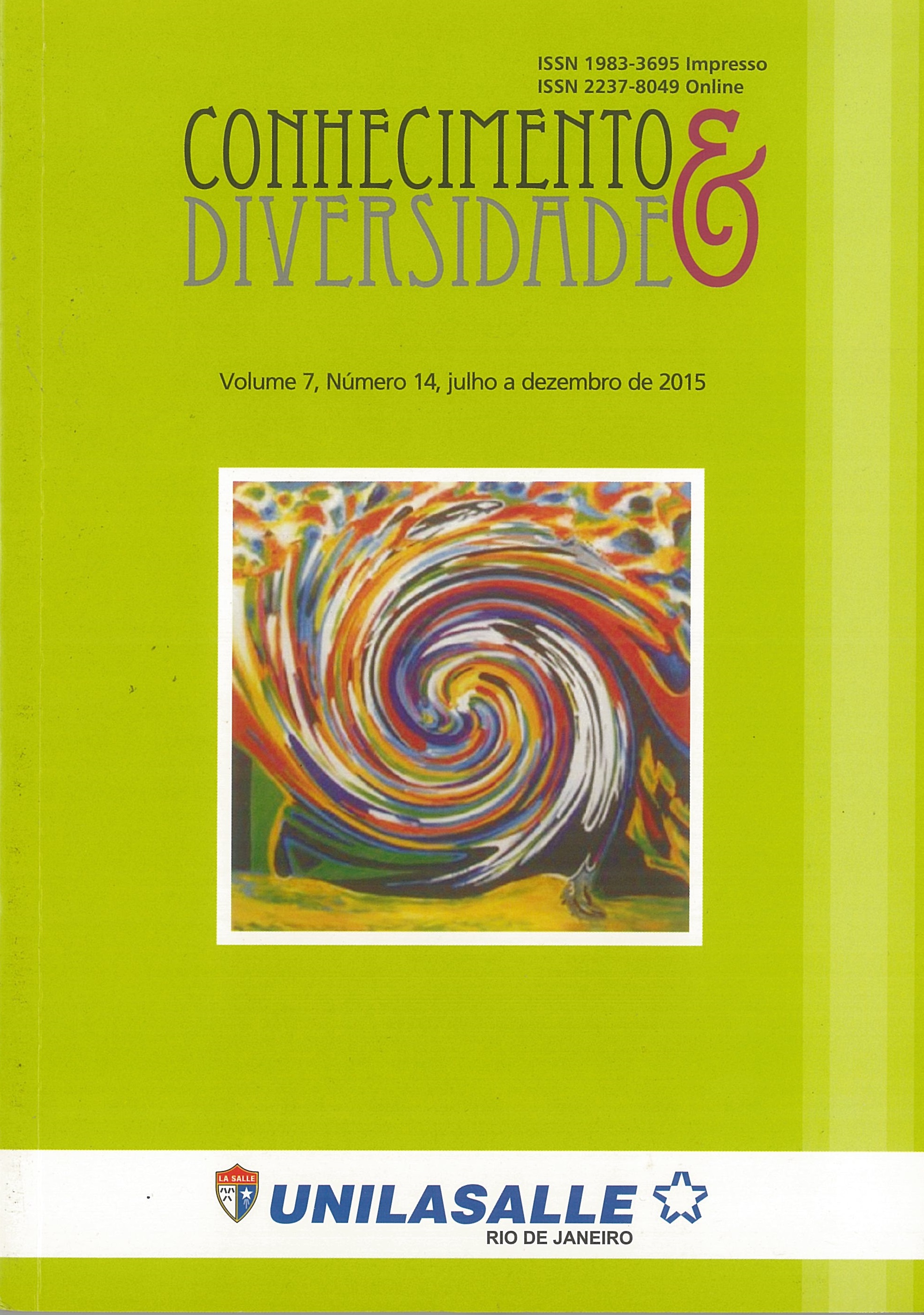Ancestralidade: limites censitários e médicos
DOI:
https://doi.org/10.18316/2095Palavras-chave:
Etnicidade. Predisposição a doenças. População brasileira.Resumo
A população humana não é homogênea e isso se reflete na capacidade física e nos riscos de aquisição de doenças. É provável que cada ser humano tenha um risco único, baseado em sua herança genética associada aos fatores ambientais. Dessa forma, atualmente, pesquisas buscam caracterizar a aptidão esportiva e o risco a doenças, no âmbito individual e populacional. Além disso, as características físicas pouco se relacionam com a ancestralidade genética. Na população brasileira, por exemplo, diversas pesquisas mostram a baixa correlação entre fenótipo cor de pele e a origem genética. A despeito destas evidências, ainda é comum o uso de classificações raciais voltadas ao binômio cor e ancestralidade biogeográfica. O trabalho buscou apresentar evidências de que a autodeclaração e a determinação de traços físicos ancestrais não se coadunam com a ancestralidade molecular, sobretudo do povo brasileiro. Além disso, o uso de informações de ancestralidade para predições médicas pode apresentar importantes limitações.
Palavras-chave: Etnicidade. Predisposição a doenças. População brasileira.
Ancestrality: census and medical limits
Abstract
The human population is not homogeneous and this is reflected in physical performance and risk of acquiring diseases. It is likely that every human being has a single risk, based on their genetic inheritance associated with environmental factors. Thereby, nowadays, epidemiological studies seek to characterize and sports performance and disease risk at the individual and population level, thus being able to make plans for physical improvement, disease prevention and therapeutic strategies. In the Brazilian population, eg, different researches have showed the low correlation between skin color phenotype and genetic ancestry. Despite of these evidences, the human racial classification, still has directed to color and biogeographical ancestry binomial. Work sought to present evidences that self-declaration and determination of physical traits ancestors are not consistent with the molecular ancestry, especially in the Brazilian people. Furthermore, the use of ancestors physical traits information for medical predictions can present significant limitations.
Keywords: Ethnicity. Predisposition to disease. Brazilian population.
Referências
ALVES-SILVA, J. et al. The ancestry of brazilian mtDNA lineages. The American Journal of Human Genetics, USA, v. 67, n. 2, p. 441-461, aug. 2000.
AMERICAN ANTHROPOLOGICAL ASSOCIATION. Statement on ‘Race’. 1998. Disponível em: . Acesso em: 22 out. 2013.
ANDRADE, F. J. da; ANDRADE R. Raça, crime e justiça. In: Crime, Polícia e Justiça no Brasil. Rio de Janeiro: Contexto, 2014. p. 256-264.
CALDEIRA, Jorge et al. História do Brasil. 2 ed. São Paulo: Schwarcz, 1997.
CENTER OF DISEASE CONTROL AND PREVENTION. Summary health statistics for U.S. adults. 2012.
CHADWICK, R. Pharmacogenetics. Encyclopedia of Applied Ethics, 2012. p. 438-442.
DRUZHEVSKAYA, A. M. et al. Association of the ACTN3 R577X polymorphism with power athlete status in Russians. European Journal of Applied Physiology, v. 103, Issue 6, p. 631–634, 1 aug. 2008.
GARRIDO, R. G. Biologia e estigmatização de pessoas: dilema médico e forense. Saúde Coletiva, São Paulo, v. 7, n. 40, p. 125-130, 2010.
GILROY, P. Against Race. Massachussets: Harvard University Press, 2000.
IBGE – Instituto Brasileiro de Geografia e Estatística. Censo Demográfico 2010. IBGE. Disponível em <http://censo2010.ibge.gov.br/resultados>. Acesso em: 10 maio 2015.
JONES, K. E. et al. Global trends in emerging infectious diseases. Nature, n. 451, p. 990-993, 21 feb. 2008.
KIVISILD, T et al. The role of selection in the evolution of human mitochondrial genomes. Genetics, n. 172, p. 373-387, jan. 2006.
NIEMI, A. K.; MAJAMAA, K. Mitochondrial DNA and ACTN3 genotypes in Finnish elite endurance and sprint athletes. European Journal of Human Genetics, n. 13, p. 965–969, may 2005.
PARRA, E. J. et al. Estimating African American admixture proportions by use of population-specific alleles. American Journal of Physical Anthropology, n. 63, p. 1839-1851, 1998.
PARRA, F. C. et al. Color and genomic ancestry in Brazilians. Proc Natl Acad Sci USA, n. 100, p. 177–182, 2003.
PENA, S. D. J. Razões para banir o conceito de raça da medicina brasileira. História, Ciências, Saúde- Manguinhos, v. 12, p. 321-346, 2005.
_____; BORTOLINI, M. C. Pode a genética definir quem deve se beneficiar das cotas universitárias e demais ações afirmativas? Estudos avançados, São Paulo, v. 18, n. 50, p. 31-50, jan./abr. 2004.
RISCH, N.; BURCHARD, E.; ZIV, E.; TANG, H. Categorization of humans in biomedical research: genes, race and disease. Genome Biology, v. 3, n.7, p. 2007.1–2007-12, 2002.
RODRIGUES, E. L. Confronto entre constituição genética, determinantes físicos e autoclassificação étnica: subsídio para adequação da política de cotas. 2007. Apresentação (Monografia de Bacharelado em Ciências Biológicas) – Universidade Estadual Norte Fluminense Darcy Ribeiro, Campos dos Goytacazes, Rio de Janeiro, 2007.
ROTH, S. M. et al. The ACTN3 R577X nonsense allele is underrepresented in elite-level strength athletes. European Journal of Human Genetics, 16, p. 391–394, 2008.
SHRIVER, M. D. et al. Ethnic-affiliation estimation by use of population-specific DNA markers. The American Journal of Human Genetics, 60, p. 957-964, 1997.
TEMPLETON, A. R. Human races: a genetic and evolutionary perspective. American Journal of Physical Anthropology, 100, p. 632-650, 1999.
YANG, N. et al. ACTN3 Genotype Is Associated with Human Elite Athletic Performance. The American Journal of Human Genetics, 73, p. 627–631, 2003.
Downloads
Publicado
Edição
Seção
Licença
Conforme recomendado pelo o Public Knowledge Project, a RCD adota para seus artigos uma licença CREATIVE COMMONS: Atribuição CC BY 4.0.
Esta licença permite que outros distribuam, remixem, adaptem e construam sobre o seu trabalho, mesmo comercialmente, desde que lhe dêem crédito pela criação original.
Esta é a licença mais adequada oferecida.
Recomendado para a máxima divulgação e uso de materiais licenciados.



